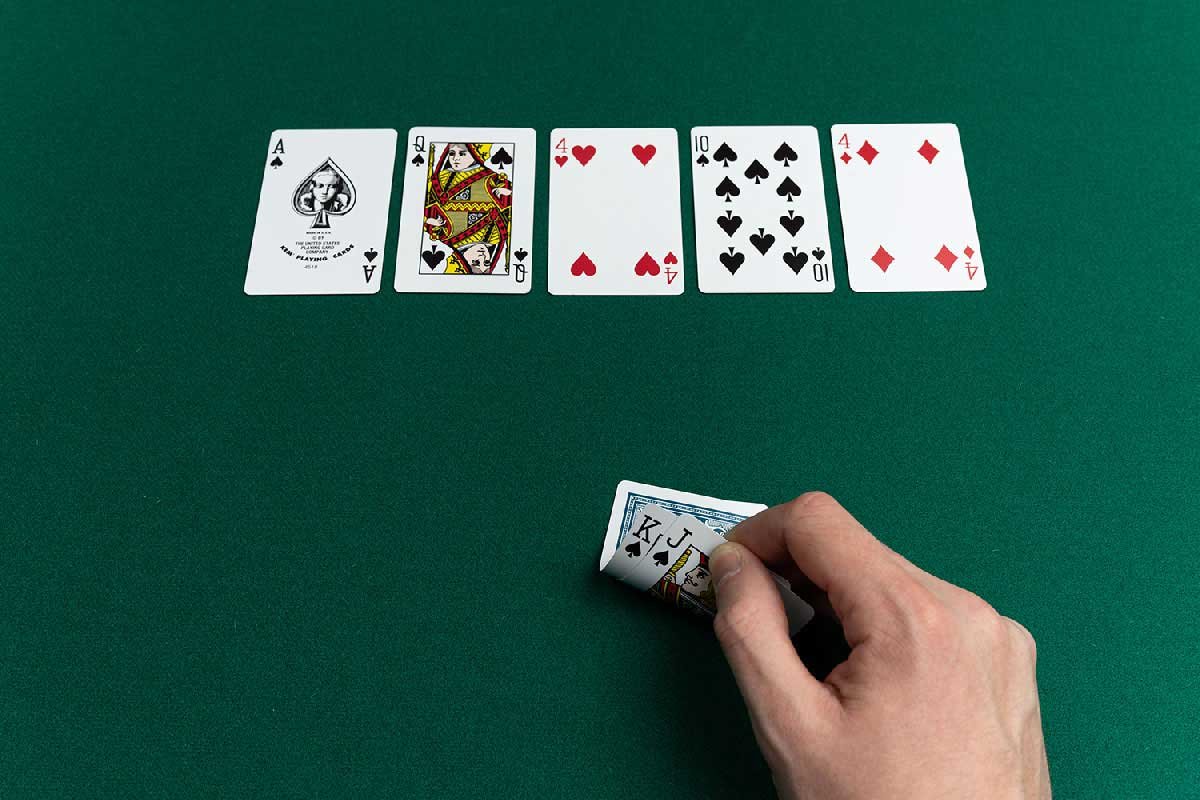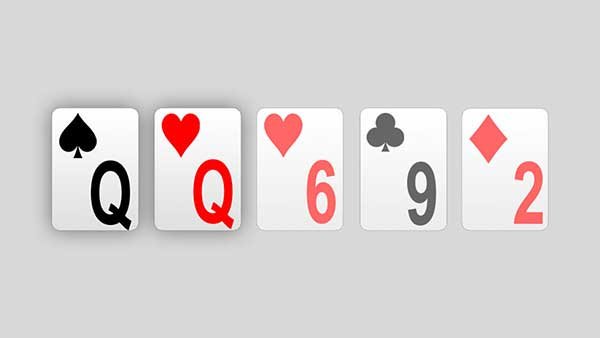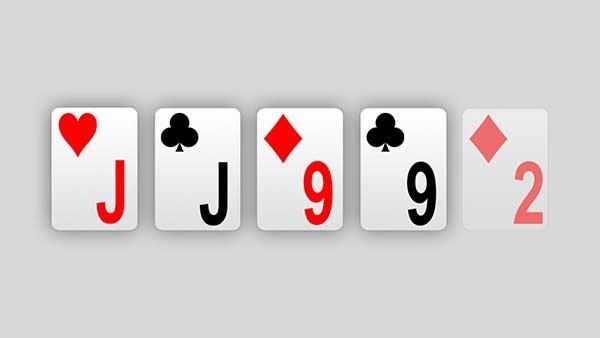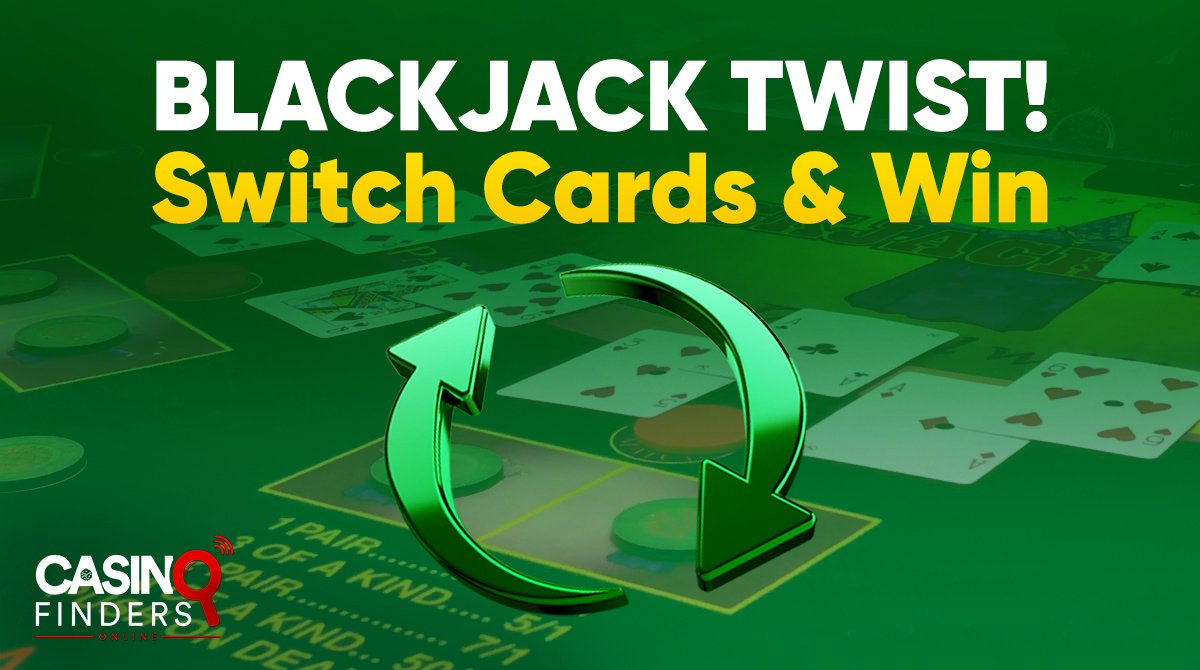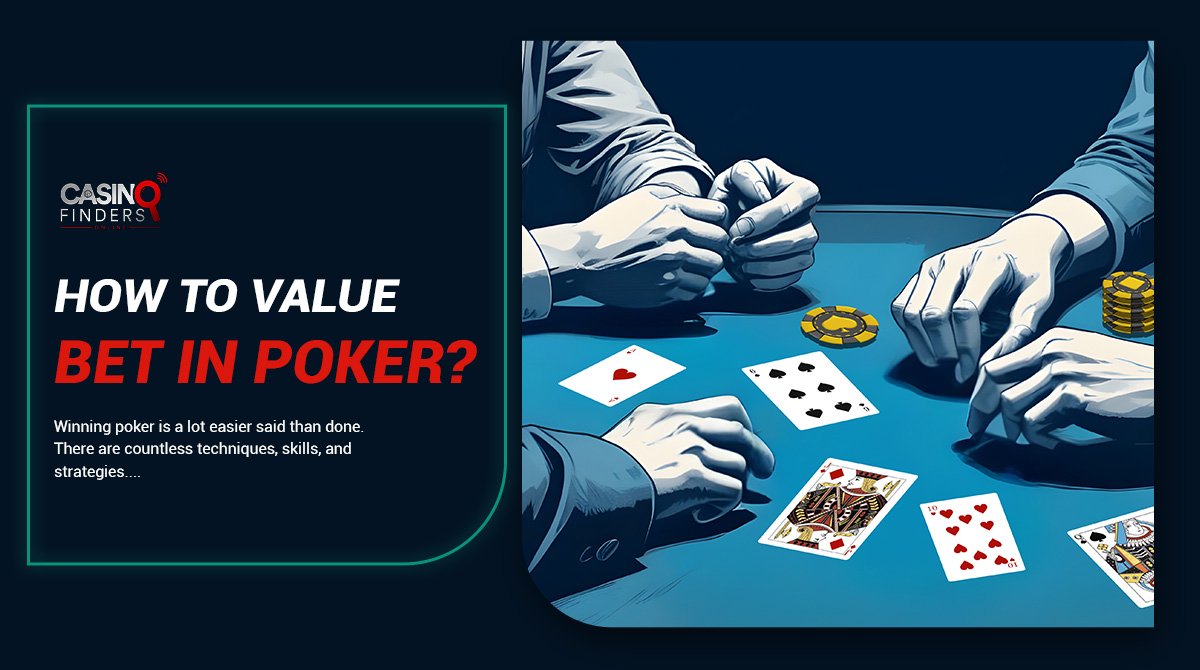Poker Hands Ranking

Written by
Mia - Researcher / WriterLast updated:
June 17, 2023
Poker Hands Ranking
Poker comes first in mind when it comes to playing cards to gamble. Its popularity surged after the advent of online playing, making it possible to play from the comfort of your home. There is a social aspect to playing Poker in land-based casinos or with friends that online playing does not offer. Players have come up with new variants of Poker since its invention, and this process continues. Some variations have stuck with the public, while some others vanished as if they never existed in the first place. After all, it is the players or the market that decides the fate of a variation.
Poker, in all likelihood, is similar to the life of a human being in the sense that chance and strategy play a role in success. We will explore the chance part of Poker, cards that are randomly dealt to us to make a hand.
How to play Poker?
Poker is played by multiple players, the number of which depends on the variation of the Poker, with a 52-card deck. Each player is dealt several cards, the number of which again depends on the variation of the Poker to construct the best possible hand. By comparing hands, players determine the winner based on who has the best hand. In Poker, players play against each other and not the house, and the prize, referred to as the pot, consists of the total amount of money wagered by the players.
Hands ranking in Poker:
The hands ranking determines who sits on the throne and wins the pot. The likelihood of a specific hand being constructed with a deck of cards dictates its rank as highest or lowest in Poker. In other words, the most infrequent is the combination of a hand, the highest it is ranked in Poker. The hands ranking is the same among most Poker variants, with some exceptions that have their system of ranking, such as Badugi.
Hands ranking is classified from the lowest to highest in Poker, but do not make the mistake that the highest always wins, as its name suggests. Different Poker variants have their rules for determining the winner. Some variants consider the lowest-ranked hand, also called the worst hand, the winner, while others split the pot between the highest and lowest-ranked hands. Razz is an example of the former, and Omaha hi-low is an example of the latter.
Learning hands ranking will help you in most Poker variants regardless of which end of the spectrum decides the winner. It is recommended to always familiarize yourself with the rules of the specific Poker variant you want to play beforehand.
Texas Hold’em:
As the most popular Poker variant, Texas Hold’em is often confused with the game as a whole. The highest-ranked hand beats all other hands in Texas Hold’em. For the sake of simplicity and Texas Hold’em popularity, we will explore Poker hands ranking based on Texas Hold’em rules.
How to play Texas Hold’em?
Among the broad categorization of Poker variants into Draw Poker, Stud Poker, and Community Poker, Texas Hold’em belongs to the last one. Community Poker derives its name from having a community of cards, also called the board, shared among the players.
The main goal of Texas Hold’em is to form the strongest 5-card Poker hand by combining the two hole cards you hold with the five community cards dealt on the table. The hand can be constructed using both, one, or none of your hole cards in combination with three, four, or all of the community cards, respectively. It has four official rounds where no card, three cards, one card, and one card are dealt on the table in each round.
Hands Ranking: Worst to Best
Before we dive into hands ranking, let us not forget that a hand refers to the best final 5-card hand constructed using community cards with or without players’ hole cards. Considering the player’s hole cards as the hand is a mistake most beginners make. Though it is possible to win the pot before the final round, also known as the showdown, we assume two players make it to the final round for the sake of simplicity.
High Card:
It is the most common case in Poker hands where no specific combination is met, and the hand is just a random of unmatched cards. As the name suggests, it refers to the highest-ranked card in a hand which determines the winner.
For example:
| Board Cards | 2♠ | 9♦ | J♥ | Q♣ | 7♥ | |
| Player 1 Cards | A♣ | 3♠ | ||||
| Player 2 Cards | 10♦ | 8♣ | ||||
Player 1 makes a hand by using only one of his hole cards and four community cards, and Player 2 makes a hand by using both his hole cards and three community cards.
| Player 1 hand | A♣ | Q♣ | J♥ | 9♦ | 7♥ |
| Player 2 hand | Q♣ | J♥ | 10♦ | 9♦ | 8♣ |
Player 1 wins the match since they have the high card, which is an Ace in this case, compared to the Queen of Player 2. The next highest cards are checked against each other in the case of both players having the same high cards.
One Pair:
It is the second most common hand in Poker, with a 1 in 1.36 likelihood of occurrence. If two cards of the same rank happen to make it to the showdown round, it is called a pair in Poker. A one-pair hand only beats a high-card hand.
For example:
| Board Cards | 5♠ | 9♥ | 2♠ | 8♦ | J♥ | |
| Player 1 Cards | K♣ | 6♠ | ||||
| Player 2 Cards | 9♦ | 10♣ | ||||
Final hands:
| Player 1 hand | K♣ | J♥ | 9♥ | 8♦ | 6♠ |
| Player 2 hand | 9♦ | 9♥ | J♥ | 10♣ | 8♦ |
Player 2 wins the game since he has a pair of nines that is higher in rank compared to the high card of Player 1. When both players have one-pair hands, the player with the higher-rank pair wins. If both players have the same rank pair, the winner is decided by side cards known as kickers.
Two Pair:
It is the third most common hand in Poker, with a 1 in 20 likelihood of occurrence. As the name suggests, if two pairs of cards of the same rank and one unmatched card happen in the hand, it is called a Two pair. One pair and high card hands are defeated by a Two pair hand.
For example:
| Board Cards | 5♠ | 10♥ | 2♠ | 8♣ | J♦ | |
| Player 1 Cards | 5♦ | 8♠ | ||||
| Player 2 Cards | 10♣ | J♥ | ||||
Final hands:
| Player 1 hand | 8♠ | 8♣ | 5♦ | 5♠ | J♦ |
| Player 2 hand | J♥ | J♦ | 10♣ | 10♥ | 8♣ |
Both players happen to have two-pair hands, and the highest-ranked pair decide the winner. Player 2 wins the match since he/she has a pair of jacks. In the case of both players having the same Two-pair hands, the fifth card, known as the kicker, decides the winner.
Three of a kind:
It is the fourth most common hand in Poker, with a 1 in 46.3 likelihood of occurrence. It happens when three cards of identical rank are in the final hand. There are four cards of each rank in Poker considering a 52-card deck, which makes having two three-of-a-kind of the same rank impossible. It beats all the previous hands mentioned above.
For example:
| Board Cards | Q♠ | 2♠ | 2♥ | 8♣ | J♦ | |
| Player 1 Cards | 8♥ | 8♠ | ||||
| Player 2 Cards | 2♣ | A♥ | ||||
Making three-of-a-kind using both hole cards with only one community card is called a Set while using a single hole card and two community cards is called Trips.
| Player 1 hand | 8♠ | 8♣ | 8♥ | Q♠ | J♦ |
| Player 2 hand | 2♣ | 2♠ | 2♥ | A♥ | Q♠ |
Both players happen to have three-of-a-kind hands, but Player 1 wins due to having the higher-ranked three-of-a-kind (Eights). The fourth and fifth cards decide the winner in case of both Players have the same-ranked three-of-a-kind hands.
Straight:
It is the fifth most common hand in Poker, with a 1 in 254 likelihood of occurrence. When five cards are in consecutive direct order and can be of different suits, a straight hand is constructed. It beats all the previous hands mentioned above.
For example:
| Board Cards | 5♣ | 3♠ | 6♥ | 8♠ | J♦ | |
| Player 1 Cards | 2♦ | 4♥ | ||||
| Player 2 Cards | 7♣ | 9♦ | ||||
Final hands:
| Player 1 hand | 2♦ | 3♠ | 4♥ | 5♣ | 6♥ |
| Player 2 hand | 5♣ | 6♥ | 7♣ | 8♠ | 9♦ |
Both players have straight hands, but Player 2 wins due to having a higher-ranked straight. The pot is chopped among players in the case of two same-ranking straight.
Flush:
It is the sixth most common hand in Poker, with a 1 in 508 likelihood of occurrence. It happens when all five cards are of the same suit regardless of their ranks. It beats all the previous hands mentioned above.
For example:
| Board Cards | 5♣ | 10♣ | 2♠ | 8♣ | J♦ | |
| Player 1 Cards | 2♣ | Q♣ | ||||
| Player 2 Cards | 8♠ | J♥ | ||||
Final hands:
| Player 1 hand | 2♣ | 5♣ | 8♣ | 10♣ | Q♣ |
| Player 2 hand | J♥ | J♦ | 8♠ | 8♣ | 10♣ |
Players 1 and 2 manage to construct a Flush hand and a Two-pair hand, respectively. Since Flush is higher ranked than Two-pair, Player 1 wins the match. As you can guess by now, the strongest high rank decides the winner in two Flush hands of the same suit. In addition, there is no possibility of two Flush hands of different suits.
Full House:
It is the seventh most common hand in Poker, with a 1 in 693 likelihood of occurrence. If three-of-a-kind and a one-pair happen to be in a hand, it is called a Full house. It beats all the previous hands mentioned above.
For example:
| Board Cards | 5♣ | 5♥ | 6♠ | 8♦ | A♦ | |
| Player 1 Cards | 6♥ | 5♠ | ||||
| Player 2 Cards | A♣ | 4♦ | ||||
Final hands:
| Player 1 hand | 5♣ | 5♠ | 5♥ | 6♥ | 6♠ |
| Player 2 hand | A♣ | A♦ | 8♦ | 6♠ | 5♥/♣ |
Player 1 manages to construct a Full house hand, and Player 2 constructs a one-pair hand. Player 1 wins the match. There is no possibility of two Full house hands with the same rank three-of-a-kind since there are only four of the same rank cards in the game. In the case of two full house hands, the three-of-a-kind of each hand should be compared.
Four of a kind:
It is the eighth most common hand in Poker with a 1 in 4164 likelihood of occurrence. It happens when four cards of the same rank occur in a hand. It is a rare hand but beats all the previous hands mentioned above.
For example:
| Board Cards | 7♣ | 5♥ | 7♠ | 8♦ | 10♥ | |
| Player 1 Cards | 7♥ | 7♦ | ||||
| Player 2 Cards | 6♣ | 9♦ | ||||
Final hands:
| Player 1 hand | 7♠ | 7♣ | 7♥ | 7♦ | 10♥ |
| Player 2 hand | 5♥ | 6♣ | 7♠/♣ | 8♦ | 9♦ |
Player 1 constructs a four-of-a-kind hand that beats the Straight hand of Player 2. There is no possibility of two same-rank four-of-a-kind hands in the game. If two four-of-a-kind hands occur, which are of different ranks, the winner is the hand with the highest rank.
Straight Flush:
It is the ninth most common hand in Poker with a 1 in 72192 likelihood of occurrence. As the name suggests, it happens when a straight and a flush come together in a hand.
For example:
| Board Cards | A♥ | 3♥ | 5♥ | 8♦ | 10♠ | |
| Player 1 Cards | 2♥ | 4♥ | ||||
| Player 2 Cards | 6♣ | 9♦ | ||||
Final hands:
| Player 1 hand | A♥ | 2♥ | 3♥ | 4♥ | 5♥ |
| Player 2 hand | 10♠ | 9♦ | 8♦ | 6♣ | 5♥ |
Player 1 has a straight flush hand that definitely beats the high card hand of Player 2. There is no possibility of two straight flush hands of different suits. In the case of two straight flush hands of the same suit, the winner is the hand with the highest-ranked card.
Royal Flush:
Last but not least, Royal flush is a subset of Straight Flush with cards of the same suit ranking Ace through ten. It has a 1 in 649739 likelihood of occurrence and only happens in James Bond movies. Many players go their entire careers without seeing a Royal Flush hand. After all, seeing royalty has always been challenging throughout history. We should count it a blessing If we could see a Royal flush once in our lifetime.
An example of a Royal Flush hand:
| A♠ | K♠ | Q♠ | J♠ | 10♠ |
No hand can beat a Royal flush, and it continues to look down on all hands and laugh at their existence. May god never grant such pride and royalty to any hand in Poker. Amen.
In a nutshell:
Understanding the hands ranking in Poker is the bread and butter of playing it. It is the building block upon which Poker is constructed. If you want to explore all Poker variants, hands ranking is the same in most. Let’s play Poker until we get a Royal Flush and feel like James Bond.
Read More:
Is Online Poker Legal in California?
Free Online Poker Games With Fake Money
How To Play Poker Online For Real Money?


